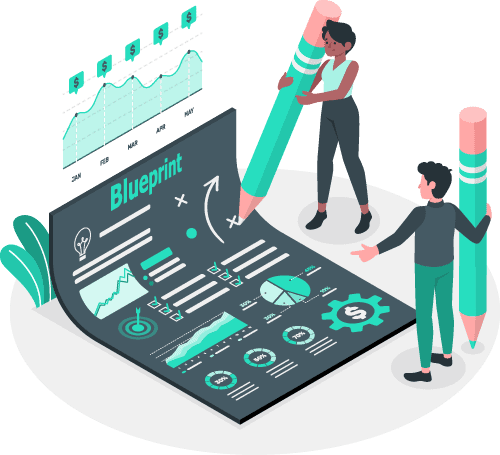I spent two years jumping between business models like a kid in a candy store. Dropshipping for three months, then affiliate marketing, then back to digital products. Each switch cost me money and momentum. The problem wasn’t my work ethic. It was choosing models that didn’t match my actual constraints as a corporate employee working nights and weekends.
You’re likely facing the same paralysis right now. With limited time and a modest budget, picking the wrong path means months of wasted effort. This guide will show you how to choose the right online business model using a simple framework that accounts for your real resources, not some guru’s fantasy scenario.

What is an Online Business Model?
A business model is your blueprint for creating value and earning revenue online. It defines what you sell, who pays you, and how money changes hands. Think of it as the operating system for your business. Everything else builds on top of this foundation.
The landscape has shifted dramatically. Nearly 50% of Americans now earn from secondary income sources or side hustles. This isn’t a trend anymore. It’s the new normal for anyone looking to diversify their income or test entrepreneurial waters without quitting their day job.
Your business model determines whether you trade time for immediate income, create assets that sell repeatedly, or build audiences first and monetize later. It dictates your startup costs, time requirements, and how quickly you’ll see your first dollar. Choosing between one-time sales and a subscription model alone changes your entire customer acquisition strategy. The revenue streams you choose flow directly from this core decision: service fees, product sales, subscriptions, or commissions.
Why Most Choose The Wrong Model
The biggest mistake isn’t working hard enough. It’s choosing based on YouTube hype instead of honest self-assessment. You watch a 22-year-old show their Shopify dashboard and think dropshipping is your answer, ignoring that they work 60 hours weekly and have $5,000 to test products.
This misalignment explains why 90% of small businesses fail within their first ten years. The problem often isn’t the business model itself. It’s picking one that doesn’t match your reality.
The “fastest money” trap is equally dangerous. You chase models promising you’ll make money fast without calculating time-to-value for your actual schedule. That $100 to $500 startup budget gets drained testing a model requiring $2,000 minimum investment. You’re set up to fail before you even start.
Weekend entrepreneurs need models with forgiving learning curves and fast feedback loops. Pick wrong and you’ll burn through your limited resources without validating whether customers will actually pay you.
Passive Income Reality
I spent six months and $1,200 learning this lesson the hard way. I built my first course while working my day job, believing the promise that I’d create it once and earn forever. The reality? I spent 80 hours recording, another 40 hours on email sequences, and still had to answer student questions weekly.
“Passive income” is largely a myth requiring significant upfront and ongoing work. Every business model demands active effort initially. Automation and leverage come later, after you’ve proven the model works and built systems around it.
The course eventually became profitable, but calling it passive was dishonest.
Unrealistic expectations kill weekend businesses faster than bad ideas. If you’re expecting to work 5 hours weekly and generate $3,000 monthly within 60 days, you’re setting yourself up for disappointment. Success requires treating your side business as real work with real effort, not as a magic money machine that runs itself.
The models that eventually become passive require the most upfront investment. You’re building an asset that pays you later. Service-based models flip this equation: immediate income but ongoing time investment. Neither is wrong, but you need to pick the one matching your current priorities.
Your Decision Framework
Three questions will tell you which model fits your constraints. Answer them honestly and you’ll stop chasing shiny objects that don’t match your reality. These questions filter through different types of business models systematically.
Sarah Chen, a full-time teacher, used this exact process to choose between content creation and digital products. She assessed her 8 weekly hours, $300 budget, and curriculum design skills. Instead of building an audience from zero, she selected Teachable course templates and earned $2,400 in her first 90 days.
The framework worked because it forced her to acknowledge her constraints upfront.
Your answers will eliminate 80% of business models immediately. That’s the point. You’re not looking for every option. You’re finding the one model that fits your specific situation right now. Let’s break down each question and what your answers mean.
How Much Time You Can Commit?
Map your actual available hours, not aspirational ones. The key is matching your schedule to models that build assets, not trading hours for dollars.
Start with a time audit if you’re unsure about your availability. Track every hour for two weeks using your phone’s notes app or a simple spreadsheet. Log when you wake up, commute, work, exercise, and wind down for bed. You’re looking for pockets of time you didn’t realize existed. Most weekend entrepreneurs discover 6-12 hours weekly they thought were “taken” but were actually spent scrolling social media or watching Netflix. This data tells you what’s realistic, not what sounds good.
Digital products work best if you can front-load effort. Expect 20-40 upfront hours creating templates, spreadsheets, or guides. After launch, maintenance drops to 2-3 hours monthly handling customer questions and updates. You invest time once and earn repeatedly. This works if you can dedicate focused weekends to creation.
Content creation demands consistent effort for momentum. Plan on 8-12 hours weekly minimum if you’re building an audience through blogging, YouTube, or social media. Miss two weeks and your algorithm advantage disappears. The commitment is real and non-negotiable for growth, but you’re building an asset that compounds over time.
Online courses need concentrated creation time. Batch 30-50 hours over several weekends to record and edit content. Once published, ongoing time drops to 2-4 hours monthly. The upfront investment is significant, but you’re creating something that generates income while you sleep.
Service-based work offers scheduling flexibility with 5-10 hour weekly commitments, but remember: every hour you work for clients is an hour not building your real business. Services keep you on the treadmill indefinitely.
Take Emma’s example. She works 9-5 and dedicates Saturday 7-10am plus Sunday 8-11am and 2-4pm. That’s 8 weekly hours total for her content creation business.
She batches recording on Saturday mornings, edits Sunday mornings, and handles social media Sunday afternoons. The schedule works because she mapped her available time first, then chose a model fitting those constraints.
What Is Your Startup Budget?
Your budget eliminates or enables specific models before you consider anything else. Service-based models launch with under $500 in basic tools. You need a website, scheduling software, and maybe a project management tool.
Everything else is optional until you’re earning.
Digital products require $100 to $500 for creation tools and hosting platforms. A Gumroad account, Canva Pro subscription, and domain name gets you operational. The barrier is your time creating the product, not the platform costs.
Online courses need roughly $500 for professional creation tools and setup. Video equipment, editing software, course platforms, and email systems add up quickly.
Models requiring physical products like dropshipping or Amazon FBA demand $2,000 to $4,000 minimum investment. You’re funding product testing, initial inventory, and advertising spend before seeing returns. If you’re starting with $500 or less, these models are off the table regardless of interest.
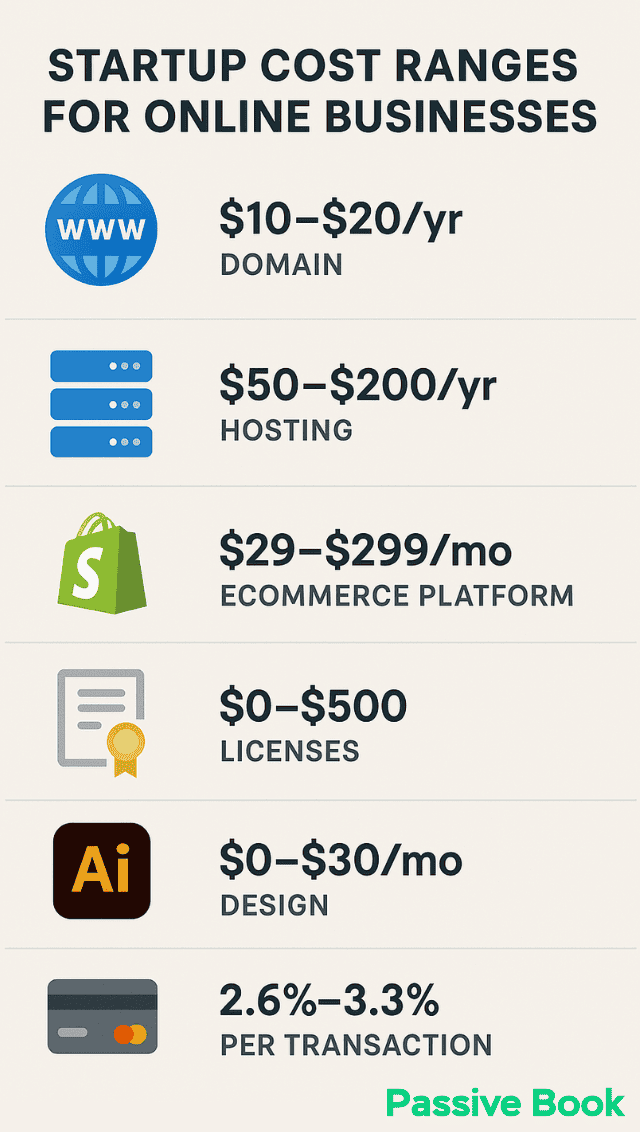
What Skills Can You Monetize Today?
Your existing professional skills likely have immediate market value waiting to be tapped. Writing, design, or teaching experience translates directly to digital products. You already know what good looks like. You just need to package it for buyers.
The smartest approach is turning your expertise into scalable assets. If you’re a marketer, create social media templates. If you’re a developer, build code snippets or starter kits. If you’re an accountant, package your spreadsheets. The expertise you use Monday through Friday can become products that sell while you sleep.
The fastest path to sustainable income comes from skills you can productize. Learning a new model from scratch adds months to your timeline. If you’re a graphic designer, selling templates beats trading hours for client work. Use what you already have, but package it once and sell it repeatedly.
Maria’s Framework Story
Maria’s decision process demonstrates how the three-question framework eliminates options systematically. As a graphic designer with a day job, she initially considered creating a design course, building a design blog, or selling Etsy templates.

Her time assessment came first. With only 5-7 hours available weekly, she ruled out course creation immediately. Recording, editing, and marketing a course requires 40+ upfront hours minimum. She didn’t have that kind of concentrated time while employed full-time. Building a blog meant 6-12 months before revenue, which felt too distant.
Budget reality reinforced the template direction. Her $200 startup fund fit perfectly with template sales. She needed only an Etsy shop subscription and design tools she already owned from her day job.
The skills audit sealed the decision. Maria’s Adobe expertise translated directly into social media templates, Instagram story templates, and presentation designs. She could batch-create 10-15 templates over a weekend, then list them while her designs sold repeatedly without additional work per sale.
She launched her Etsy shop and earned her first $47 within 2 weeks. Six months later, she has 32 templates listed and consistently generates $1,800+ monthly working just 3-4 hours weekly on new designs. Her income grows as her template library expands, not as she works more hours. Each of the five weekend-proven models has different tradeoffs worth understanding.
Five Business Models
Each model has different tradeoffs in startup costs, time to first dollar, and income potential. Understanding these differences helps you pick the model matching your current situation.
The order below reflects long-term wealth building potential. Digital products, courses, and content creation build assets that scale without trading hours for dollars. Services appear last because they’re a stepping stone, not a destination for solopreneurs focused on leverage and freedom.
Digital Products
Digital products break the time-for-money equation. You create templates, spreadsheets, checklists, or design files once, then sell them unlimited times without additional work per sale. This is true leverage for weekend entrepreneurs building wealth.
11 digital product businesses on platforms like Etsy generate between $5,000 and $168,000+ annually.
Zero inventory costs combined with 70-95% profit margins make this a highly profitable model for budget-conscious solopreneurs.
The challenge is upfront creation time and marketplace competition. Expect 20-40 hours building your first product, then ongoing effort marketing and updating it. Marketplace platforms connect buyers and sellers efficiently, but you’re competing with thousands of other sellers, so your product needs clear differentiation or a specific niche angle.
This model rewards patience. Your first month might generate $50 in sales. Month six could bring $800 as you add more products and build marketplace credibility. Each new product you add compounds this baseline income. The compounding effect works if you stay consistent.
Best For: Designers, writers, or specialists with template-able expertise
Startup Cost: $100-300 for tools and hosting
Time to First Dollar: 4-8 weeks
Weekly Commitment: 20-40 hours upfront, then 2-3 hours maintenance
Online Courses
Online courses represent the high end of weekend business models in both potential income and required investment. You’re packaging your expertise into structured lessons that students pay to access. The global e-learning market is expected to reach $325 billion by 2025, showing massive demand for quality education.
Daniel Scott, a part-time Skillshare instructor, demonstrates the model’s weekend viability. He earns $15,000+ annually teaching Photoshop while maintaining his day job.
The key is choosing platforms that handle marketing and payment processing so you focus on content creation.
Expect to invest 30-50 hours recording and editing content before launch. This works if you can batch production over several weekends or during a slower work period. Once published, courses generate income with minimal ongoing effort beyond student questions and occasional updates.
The barrier is higher than other models. You need genuine expertise worth paying for and comfort being on camera. But for subject matter experts, courses provide the best income-to-effort ratio long term.
Best For: Subject matter experts comfortable teaching on camera
Startup Cost: $300-500 for basic setup
Time to First Dollar: 8-12 weeks
Weekly Commitment: 30-50 hours upfront, then 2-4 hours monthly
Content Creation
Content creation inverts the traditional business model. You focus on building an audience first instead of selling from day one through consistent publishing on YouTube, blogs, podcasts, or social media. Monetization comes later through ads, sponsorships, memberships, or product recommendations.
Morning Brew reached $75M revenue starting as a college newsletter in a dorm room. That’s an outlier result, but it proves the model’s potential when execution and timing align. For weekend creators, realistic expectations matter more than unicorn stories.
Plan on 6-12 months of consistent publishing before meaningful income appears. You’re investing time upfront with delayed returns. This requires either financial cushion or treating content creation as a long-term asset while earning from other sources.
The model rewards patience and consistency. Miss two weeks and your momentum stalls.
But compound this effort over a year and you’ll have an audience that trusts you. That becomes the foundation for multiple revenue streams long term.
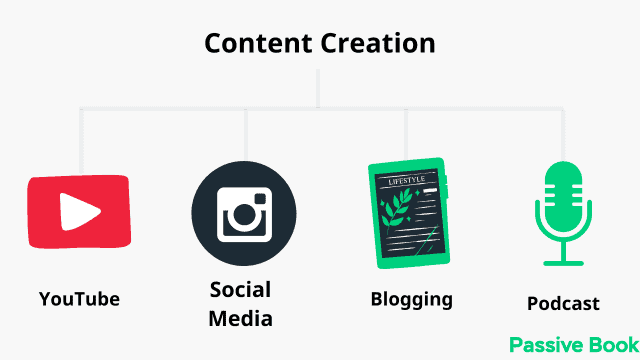
Best For: Natural communicators willing to play the long game
Startup Cost: $200-400 for equipment and hosting
Time to First Dollar: 6-12 months
Weekly Commitment: 8-12 hours consistently
Affiliate Marketing
Affiliate marketing lets you earn commissions promoting tools and products you already use. You’re the bridge between third party companies and their potential customers, getting paid 5-50% for successful referrals. The model requires zero inventory or product creation, just genuine recommendations.
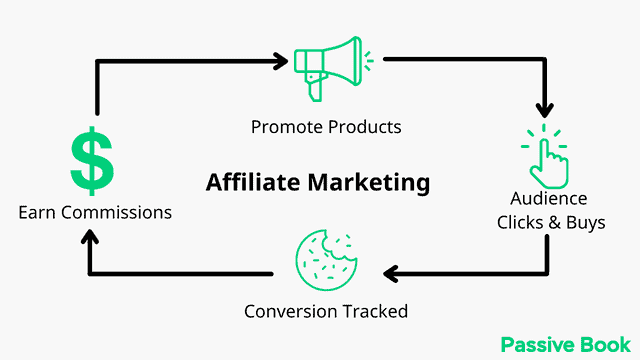
Affiliate marketing spending in the US reached $8.2 billion in recent years, showing massive industry growth. Companies pay affiliates because it’s performance-based marketing. They only pay when you deliver results.
The catch is simple: you need an existing audience or content platform first. Affiliate marketing is a monetization strategy, not a standalone business model. It layers on top of content creation, email lists, or social media following you’ve already built.
Weekend entrepreneurs succeed with affiliate marketing by recommending tools they use in their own businesses. Your audience trusts your recommendations because they see you using the products. This authenticity converts better than generic product reviews.
Best For: Content creators with engaged audiences
Startup Cost: $0 to join programs
Time to First Dollar: 2-6 months after audience building
Weekly Commitment: 3-5 hours creating promotional content
Service-Based Business (The Stepping Stone)
Services offer the fastest path from zero to first dollar, but they’re the worst long-term model for building wealth. You’re exchanging your skills and time for direct payment. Every dollar requires another hour of work. Your income caps at your available hours multiplied by your rate.
The brutal truth: services create a second job, not a business. You’ll earn money faster than other models, but you’re building zero equity. Miss a week of client work and your income drops to zero.
Justin Welsh built a $10M+ solopreneur business combining consulting and digital products. Notice the combination. He didn’t stay in pure consulting. Sarah Doody reached $6,000 monthly with weekend UX consulting, then systematically converted her client work into productized offerings.
Services work as a bridge strategy. Use them to generate quick cash while building your real business. Take the $50 to $150 hourly you earn from clients and reinvest that money into creating digital products, courses, or content. Set a deadline: 6-12 months maximum in pure services before transitioning to scalable models.
The goal is extracting yourself from the equation. Document your service delivery process. Turn repeated client solutions into templates. Package your expertise into products that sell without your time.
Best For: Quick cash to fund your real business (not a long-term strategy)
Startup Cost: Under $500 for basic tools
Time to First Dollar: 2-4 weeks
Weekly Commitment: 5-10 hours (but plan your exit from day one)
Models Beginners Should Avoid
Some business models sound appealing but systematically fail for time-constrained solopreneurs. Understanding why these models don’t work saves you months of wasted effort and precious startup capital.
Dropshipping requires significant marketing investment and active supplier management. It’s not the passive automation gurus promise. You’re constantly testing products, managing ad campaigns, handling customer service issues, and dealing with shipping delays you can’t control. This demands 15-25 hours weekly minimum plus $2,000 to $4,000 in testing budget.
Print-on-demand faces brutal competition with only a 24% long-term success rate. Marketplaces are saturated with designs, and standing out requires serious skills or massive ad spend. Most weekend entrepreneurs lack both. The model works for skilled advertisers with marketing budgets, not hobbyists hoping for easy money.
Amazon FBA and traditional ecommerce business models compound these challenges. You need $2,000 to $4,000+ for inventory investment before seeing returns. Add complex logistics, strict platform rules, and increasing competition. The barrier to entry has climbed dramatically while profit margins have compressed. Weekend warriors with limited capital get squeezed out quickly.
These models aren’t inherently bad. They’re just mismatched for your constraints. They require resources, time, and expertise that weekend entrepreneurs don’t have while building their first business. Save yourself the frustration and focus on models that respect your reality.
AI’s Game-Changer Role
AI tools have become the weekend entrepreneur’s competitive advantage, compressing tasks that previously took hours into minutes. This isn’t hype. It’s practical time arbitrage that makes side businesses viable for people with day jobs.
ChatGPT Plus at $20 monthly and Claude Pro help weekend creators generate content outlines, social media posts, and email sequences in 30 minutes versus 3 hours manually. You’re not replacing human creativity. You’re eliminating blank page paralysis and getting to the refinement stage faster.
Service providers use AI to draft client proposals and deliverables, saving 5-8 hours weekly. The AI handles first drafts while you add strategic thinking and client-specific insights. This time savings lets you serve more clients without increasing hours worked.
n8n‘s AI features automate repetitive tasks like client onboarding and invoice follow-ups without coding knowledge. Set up automations once and they run forever, freeing your limited weekend hours for revenue-generating activities instead of administrative busywork.
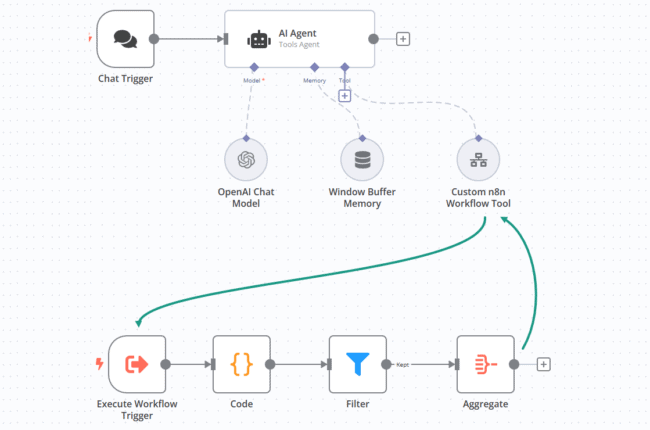
The key insight: treat AI as your weekend assistant. It handles research, first drafts, and repetitive tasks. You add the unique human insight, personal experience, and strategic thinking that clients actually pay for. This division of labor makes weekend businesses sustainable long term.
30-Day Validation Plan
Validation beats creating a formal business plan every time. Test with real customers before writing 20 pages no one will read. This four-week framework forces you to test your chosen model with real customers before investing months of effort. Each week has a specific goal that builds toward income validation.
Week 1 focuses on decision clarity. Complete the three-question framework honestly and select one business model. Write down your choice and the reasoning behind it. This commitment prevents you from switching models at the first sign of difficulty.
Week 2 is about market testing. Create your simplest viable offering, not perfect, just good enough to show potential customers. Reach out to 20 people in your network or target market. Ask if they’d pay for what you’re offering. Track their responses and objections. This feedback shapes your approach before you’ve invested significant time.
Week 3 demands action. Deliver your first paid project or pre-sell your product to at least one customer. This is the moment that separates real businesses from hobbies. Getting someone to pay you, even $50, validates that your model has commercial viability.
Week 4 is analysis. Review your results honestly. Did you earn money? How much effort did it require? Do you want to keep going? Use this data to decide whether to double down on this model or pivot to one of your other options. Four weeks of validation in the early days prevents four months of wasted effort later.
When to Pivot
Knowing when to quit a model is as important as choosing one. Pivot if you’ve hit 90 days of consistent effort with zero revenue. That’s enough time to validate whether customers will pay for your offering. Zero dollars after three months means fundamental model misalignment, not execution problems.
Switch models if your chosen approach consistently demands more time and energy than you have available. You picked a service business thinking it would take 5-7 hours weekly, but client demands require 15 hours. That’s unsustainable long term. Better to pivot now than burn out in six months.
Jake’s story illustrates smart pivoting. He spent 90 days building a dropshipping store with zero sales despite consistent effort. Instead of forcing it, he pivoted to Gumroad digital products using the product research skills he’d developed. His first sale came within 2 weeks. Now he earns $3,000 monthly selling market research templates, the exact skills dropshipping taught him.
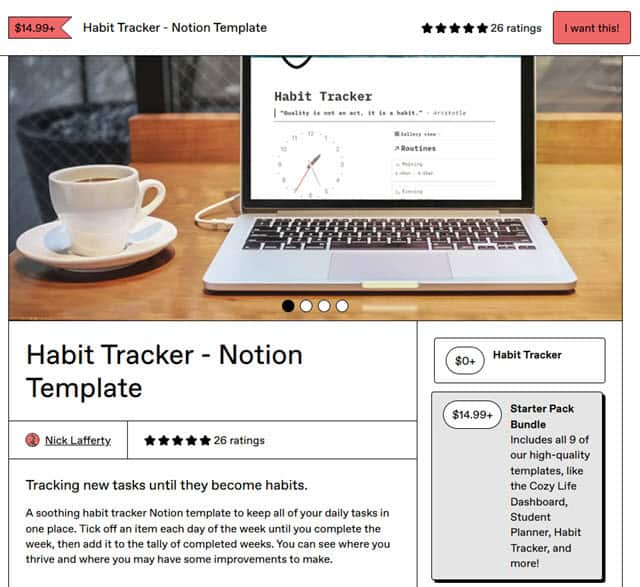
The pattern matters more than single data points. One bad week doesn’t mean pivot. Three months of consistent effort with no forward progress does. Use the 30-day validation plan to catch misalignment early, before you’ve invested a year in the wrong model.
Frequently Asked Questions
Which Online Business Model Is Most Profitable?
Digital products and courses generate the highest long-term returns because they scale without additional work per sale. One template can sell 1,000 times. One course can serve unlimited students. Services generate immediate cash but cap at your available hours. Choose digital products or courses if you’re building wealth. Use services only as a bridge to fund your real business.
Can I Start With Zero Budget?
Affiliate marketing costs nothing to join programs. Digital products need only a Gumroad account and free Canva to start. Content creation works with free platforms like Medium or YouTube. Services also launch with minimal investment using free tools. However, expect to invest $100 to $200 eventually for a professional domain and hosting. Starting free is possible, but budget $200-500 to build something sustainable.
How Long Until I See My First Dollar?
Digital products take 4-8 weeks from creation to first sale. Online courses need 8-12 weeks to build and launch. Content creation requires 6-12 months of consistent publishing before meaningful revenue. Services generate income fastest at 2-4 weeks, but remember they’re a stepping stone, not a destination. Your timeline depends on whether you’re optimizing for quick cash or building long-term wealth.
Should I Quit My Job Before Starting?
Never quit your day job until your side business consistently generates 6-12 months of living expenses. Your job provides the financial cushion to build properly without desperation. Most successful weekend entrepreneurs launch while employed, validate their model, and transition only after proving sustainable income. Quitting too early adds pressure that kills good businesses.
What Next?
You now have a practical framework for how to choose the right online business model based on your actual constraints, not fantasy scenarios. The three questions about time, budget, and skills eliminate 80% of options immediately and point you toward models that match your reality.
I know the paralysis is real. You’ve probably spent weeks researching business models, watching YouTube videos, and still feel stuck. That ends now. Pick one model using the framework, commit to the 30-day validation plan, and actually launch something. Imperfect action beats perfect planning every time.
If this guide helped clarify your path forward, click the share buttons below to help another overwhelmed professional find it. Drop a comment sharing which business model you’re choosing and why. Your reasoning might help someone else make their decision. What’s the one constraint that matters most in your model selection: time, budget, or skills?
Share this post with your friends & followers: